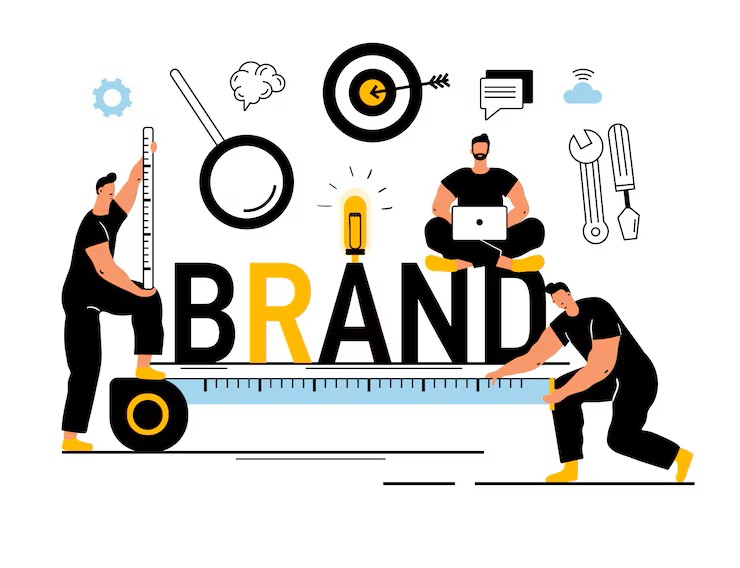In today’s digital world and era of online connections, your personal brand has become one of your strongest and most valuable tools. It speaks for you long before you enter the room, reply to an email, or join a video call. Whether you’re a freelancer, entrepreneur, creative, coach, or job seeker, building a personal brand online isn’t just a trendy concept — it’s a strategic necessity.
But what exactly is a personal brand?
It’s the digital persona you cultivate — the way you present your ideas, values, skills, and passions to the world. It’s how people perceive you through your online presence, content, communication, and engagement.
In 2025, as competition intensifies and online platforms evolve, building a lasting, authentic personal brand is more important than ever. This comprehensive guide combines insights, strategies, and actionable steps to help you build a brand that not only stands out but also stands the test of time.
- Understand What a Personal Brand Truly Means
Let’s start with the basics.Your personal brand goes beyond just a logo, stylish colors, or a carefully crafted Instagram profile.Those are tools. Your brand is your reputation, your mission, and the promise you make to your audience.
It’s what people associate with your name — your work ethic, your expertise, your personality, and your story. Unlike corporate branding, a personal brand thrives on authenticity. It’s about amplifying who you are, not fabricating a persona to fit trends.

Ask Yourself:
What do I want to be known for?
What values do I stand by?
What strengths and experiences make me unique?
Clarity here will guide everything else — your content, messaging, tone, and goals.
- Define Your Niche and Target Audience
The internet rewards specificity. To build a brand that resonates, you must define your niche and clearly understand your audience.
Your niche lies where your talents, interests, and what the market needs come together. For example:
A fitness coach who specializes in postnatal workouts
A career strategist helping Gen Z job seekers
A sustainable fashion blogger advocating minimalist wardrobes
Once you identify your niche, define your target audience:
Who are they?
What are their pain points?
What solutions or insights can you offer them?
When your brand speaks directly to someone’s problem or aspiration, it becomes memorable.
- Set Clear Branding Goals
Why are you building a personal brand in the first place? You must define your objectives so your strategy stays focused.
Examples of branding goals:
Attract freelance or consulting clients
Get speaking gigs or media features
Build an audience for a product or course
Land better job opportunities
Position yourself as a thought leader
With a clear destination, you’ll know what content to create, which platforms to prioritize, and how to measure success.
- Audit and Align Your Online Presence
Before building anything new, clean up your existing online presence. Google yourself and see what shows up. Check your social media bios, posts, and comments. Ask:
Do they reflect your values?
Are they aligned with your niche?
Are they professional and consistent?
Delete or update anything that no longer serves your brand identity. Start fresh if necessary. Maintaining consistency across different platforms enables others to identify and trust you more quickly.
- Create a Memorable Brand Identity
Your personal brand should be instantly recognizable. While you don’t need to be a designer, you do need a consistent identity.
Key Elements of Personal Brand Identity:
Name & Handle: Use the same (or similar) username across platforms.
Profile Photo: Use a high-quality headshot that looks professional and friendly.
Bio/Headline: Clearly state who you are and what you do. Example: Helping startup founders turn their ideas into 6-figure businesses.
Color Palette & Fonts (for website or content): Choose 2–3 colors and fonts to stay visually cohesive.
Tone of Voice: Are you formal, playful, empowering, witty, or a mix? Use the same tone across your content.
These factors contribute to making your brand appear professional, purposeful, and reliable.

- Build a Personal Website or Portfolio
A personal website acts as your digital headquarters. Social media platforms come and go, but your website is a place you own.
Your Website Should Include:
About Page: Share your story, values, and mission.
Portfolio or Work Samples: Show what you can do.
Blog or Articles: Share your expertise.
Testimonials: Social proof builds credibility.
Contact Info or Booking Form: Make it easy for people to reach you.
Use platforms like WordPress, Wix, or Squarespace. Ensure the design is simple, user-friendly, and optimized for mobile devices.
- Become a Value-Driven Content Creator
In the digital world, content is your currency. To build influence and trust, you need to regularly share valuable content that educates, entertains, or inspires.
Content Types You Can Create:
How-to guides and tutorials
Behind-the-scenes of your process
Thought leadership on industry trends
Lessons from personal experience
Case studies and success stories
Visual content: infographics, reels, carousels
Videos and livestreams
Choose the content formats that align with your abilities and suit the platform. The key is consistency. Start with a realistic schedule — maybe 2–3 posts per week — and grow from there.
- Focus on Storytelling Over Selling
Your personal brand should make people feel something — inspired, hopeful, empowered. And that happens through storytelling.
Share your journey, including failures, lessons, and breakthroughs. Vulnerability makes you relatable. Explain the purpose behind your work, not just the work itself.
Example stories:
How you overcame a challenge
A pivotal moment that shaped your career
A mistake that taught you a valuable lesson
People connect with people, not just services or achievements.
- Choose the Right Platforms (and Dominate Them)
Instead of trying to be everywhere, concentrate on one or two platforms where your audience engages the most and your content performs best.
Best Platforms for Personal Branding:
LinkedIn: Ideal for professionals, entrepreneurs, and B2B consultants.
Instagram: Visual storytelling, lifestyle branding, creatives.
YouTube: Long-form video, tutorials, vlogs.
Twitter/X: Thought leadership, tech, writing.
TikTok: Short, engaging, creative content.
Align the platform with your goals. If you’re a career coach, LinkedIn is gold. If you’re an artist, Instagram and Pinterest may be your best bet.
- Engage, Don’t Just Broadcast
Personal branding is not just about talking — it’s about connecting.
Interact with your audience:
Reply to comments and messages
Ask questions in your posts
Join relevant groups and communities
Collaborate with other creators
Support and share others’ content
When you treat your audience like real people and not just numbers, they become loyal fans — and often clients or advocates.
- Build Credibility and Trust
To turn attention into action, you need social proof. Trust is often built through association with others who are already trusted.
Ways to Build Credibility:
Share testimonials from clients or colleagues
Highlight collaborations or media features
Get certified in your area of expertise
Publish guest posts on authority blogs
Speak at online summits or podcasts
Display metrics if relevant (e.g., “Helped 500+ students get jobs”)
Credibility turns interest into income.
- Leverage Video and Audio for Deeper Connection
In 2025, video and audio content are booming. They help humanize your brand, boost algorithm reach, and build deeper trust.
Formats to Explore:
YouTube tutorials
Reels or TikToks
Instagram/LinkedIn Lives
Podcasts or audio snippets
Voice notes on platforms like X or WhatsApp
Begin with small steps — your initial video may not be flawless, and that’s completely fine.
Progress > perfection.
- Collaborate and Network Strategically
Your brand grows faster when others amplify it. Collaboration exposes you to new audiences and builds credibility.
Ways to collaborate:
Co-host a live session
Interview someone in your field
Be a guest on a podcast
Write for other blogs or newsletters
Partner on a product or freebie
Also, attend virtual networking events and webinars. Relationship-building is a long-term asset.
- Monitor, Adapt, and Stay Updated
Personal branding is dynamic. Trends evolve, platforms change, and your goals might shift.
Regularly review:
Your analytics (engagement, traffic, conversion)
Audience feedback
Industry trends
Utilize tools such as Google Analytics, LinkedIn Insights, or social media analytics. Be open to adjusting, testing new approaches, and fine-tuning your message.
- Stay Authentic, Stay Consistent, Stay Patient
The most powerful brands are those rooted in authenticity. Don’t try to copy influencers or over-polish your image. Be real, be relatable, be resilient.
Also, be consistent — in your content, message, and presence. Brands aren’t built in a week. It may take months or years — but the long-term payoff is freedom, recognition, and opportunity.

Conclusion:
Your Brand Is Your Legacy
Building a personal brand online is not about becoming internet-famous. It’s about owning your narrative, amplifying your voice, and creating opportunities aligned with who you are and what you care about.
Your personal brand is your digital reputation — one that can open doors, connect you to people across the world, and position you as a trusted authority in your space.
Start small, stay true to your values, and show up consistently. Over time, your brand will not just speak for you — it will work for you.
Would you like a downloadable PDF version of this blog, SEO title/meta description, or a version formatted for WordPress?
Your Brand is the Story You Leave Behind
In today’s interconnected world, your personal brand is your digital fingerprint — a lasting impression that tells the world who you are, what you stand for, and why you matter.
Whether you’re a content creator looking to monetize your skills, a startup founder building credibility, or a professional carving a niche in your industry, personal branding is the bridge between your current position and your desired destination.
But remember: building a powerful personal brand isn’t about faking perfection or chasing viral fame. It’s about showing up authentically, offering value consistently, and nurturing relationships genuinely.
It’s about being so clear in your message, so confident in your purpose, and so intentional in your actions that people can’t help but remember your name.
Having a large audience isn’t necessary to create meaningful influence.
You need clarity, commitment, and connection.
So here’s your roadmap:
Get clear on your values and vision.
Craft your message with authenticity.
Show up with consistency and purpose.
Share your knowledge generously.
Engage with your audience like humans, not just numbers.
Keep evolving with feedback, insights, and courage.
Start where you are, use what you have, and begin building the brand the world needs to see — yours.
Because in a noisy digital world, the boldest thing you can be is yourself — unapologetically and relentlessly.
So take that first step today. Define your story. Own your space. And let the world meet the best version of you — branded with purpose.



